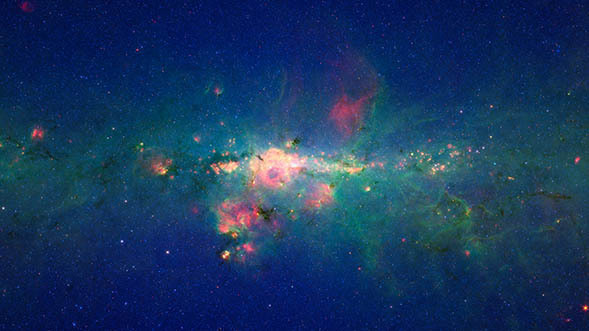Innovations

When the National Academy of Sciences declared the Spitzer Space Telescope the highest-priority new initiative in astronomy and astrophysics for the1990s, the mission's development costs totaled roughly $2.2 billion. However, the observatory underwent radical changes in design to meet evolving cost constraints.
Moreover, ongoing advances in the technology of infrared detectors, coupled with innovative choices in orbit and the design of cryogenic systems, maintained the scientific vitality of the telescope at roughly one-third the original cost estimate.
Major innovations included: Infrared Detector Developments, Clever Choice of Orbit, Store and Dump Telemetry, and Project Management.



